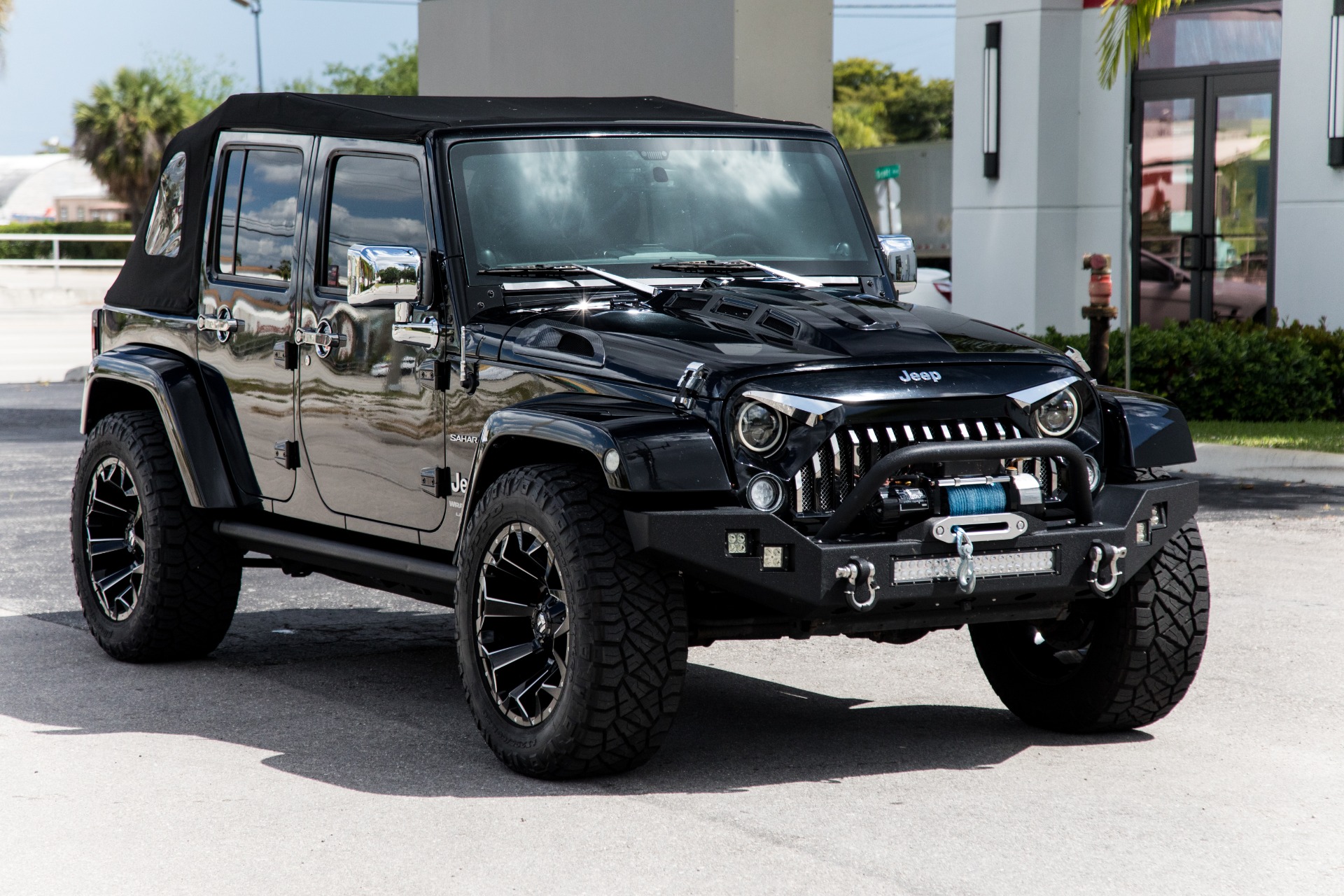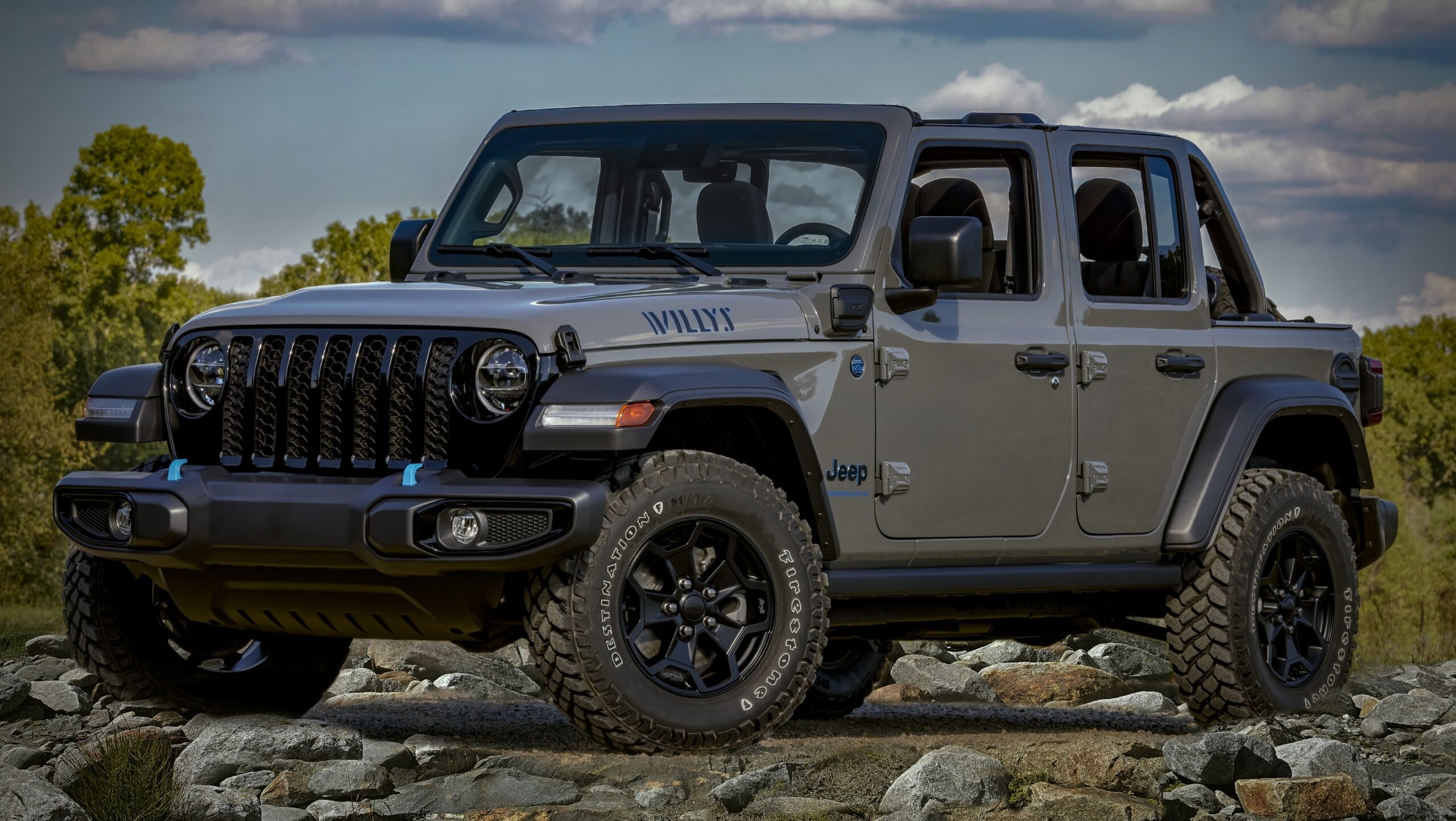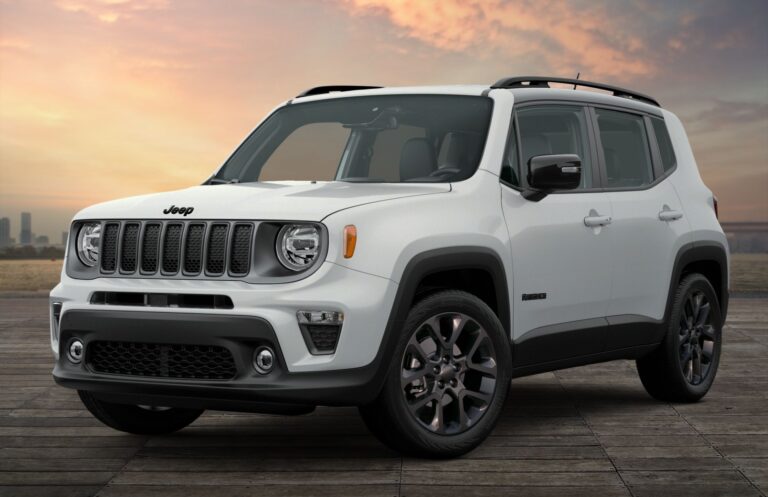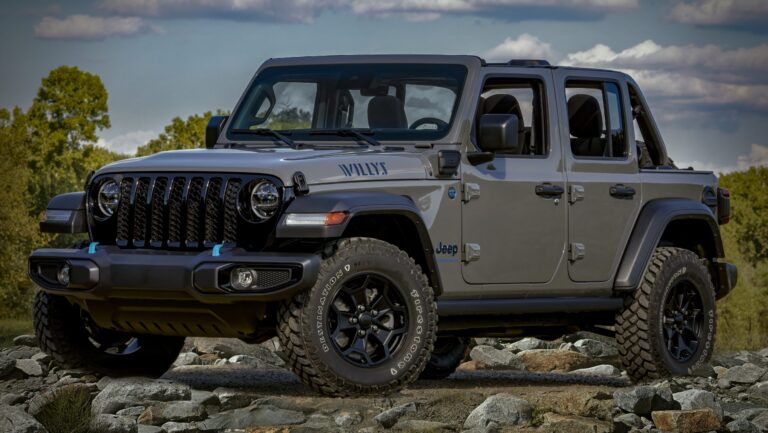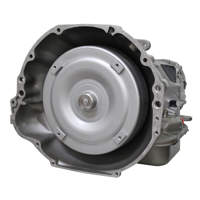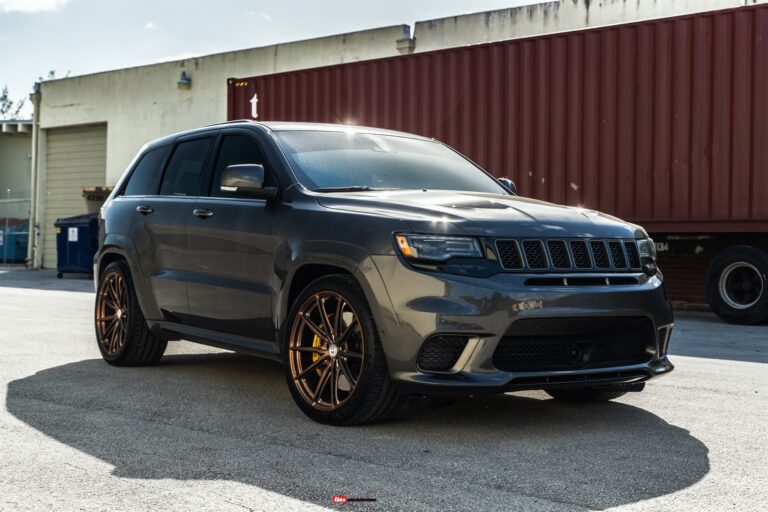Wrangler Jeep 4×4: The Ultimate Guide to Off-Road Dominance
Wrangler Jeep 4×4: The Ultimate Guide to Off-Road Dominance jeeps.truckstrend.com
Introduction: The Undisputed King of the Trail
The Jeep Wrangler 4×4 is more than just a vehicle; it’s an icon, a symbol of freedom, adventure, and unparalleled off-road capability. Tracing its lineage back to the legendary Willys MB of World War II, the Wrangler has evolved into a modern marvel that effortlessly blends heritage with cutting-edge technology. For decades, it has stood as the benchmark for off-road performance, inspiring a passionate community of enthusiasts who push its limits on the most challenging terrains imaginable. Whether you’re navigating rocky trails, traversing sandy dunes, or simply seeking an open-air driving experience unlike any other, the Wrangler Jeep 4×4 promises an adventure that few other vehicles can deliver. This comprehensive guide will delve into every facet of this legendary machine, from its historical roots to its advanced 4×4 systems, helping you understand what makes the Wrangler the undisputed king of the trail.
Wrangler Jeep 4×4: The Ultimate Guide to Off-Road Dominance
A Legacy Forged in Dirt: History and Evolution
The story of the Jeep Wrangler begins not on paved roads, but in the crucible of war. The original Willys MB, a rugged and versatile 4×4, proved indispensable during WWII, earning its reputation for go-anywhere capability. After the war, a civilian version, the CJ (Civilian Jeep), was introduced, bringing the spirit of adventure to the masses.
The Wrangler nameplate officially arrived in 1986 with the YJ generation, replacing the CJ series. It maintained the iconic open-top, removable-door design but introduced rectangular headlights – a controversial feature that was soon replaced by the traditional round headlights in the subsequent TJ generation (1997-2006). The TJ brought significant advancements, including coil-spring suspension for improved ride quality and articulation.
The JK generation (2007-2018) marked a monumental shift, introducing the four-door "Unlimited" model, which dramatically expanded the Wrangler’s appeal and practicality. This generation also saw a significant upgrade in interior comfort and available features.
Today, the JL generation (2018-present) represents the pinnacle of the Wrangler’s evolution. It retains the classic aesthetic while integrating modern technology, more efficient powertrains, and even greater off-road prowess. Each iteration has meticulously balanced the preservation of its core identity with the adoption of necessary innovations, ensuring the Wrangler remains relevant and dominant in the ever-evolving automotive landscape.
Core Characteristics and Design Philosophy
What makes a Wrangler instantly recognizable and uniquely capable? Its design philosophy is rooted in functionality and durability, creating a vehicle that is as visually striking as it is trail-ready.
- Iconic Design Elements: The seven-slot grille, round headlights, exposed door hinges, and flat fenders are timeless design cues that immediately identify a Wrangler. These aren’t just aesthetic; they reflect the vehicle’s utilitarian heritage.
- Body-on-Frame Construction: Unlike many modern SUVs, the Wrangler utilizes a robust body-on-frame design. This provides a strong, rigid platform ideal for off-roading, allowing for greater articulation and resistance to twisting forces.
- Solid Axles: Both front and rear solid axles are a hallmark of the Wrangler’s off-road pedigree. While they can contribute to a less refined on-road ride compared to independent suspensions, they offer superior articulation, strength, and ground clearance crucial for navigating extreme terrain.
- Removable Components: The ability to remove the doors, fold down the windshield, and choose between various soft and hardtop configurations offers an unparalleled open-air driving experience, connecting occupants directly with their environment.
- Approach, Breakover, and Departure Angles: The Wrangler’s short overhangs and high ground clearance are engineered to maximize these critical angles, allowing it to climb steep obstacles, clear crests, and descend without scraping.

This purposeful design ensures that every Wrangler is built from the ground up to conquer challenges, embodying the spirit of adventure and rugged capability.
Understanding the Legendary 4×4 System
The heart of the Wrangler’s off-road prowess lies in its sophisticated 4×4 systems. These systems are designed to distribute power to all four wheels, maximizing traction in low-grip situations.
Types of 4×4 Systems:

-
Command-Trac® Part-Time 4×4 System (Standard on Sport, Sahara): This system is a traditional part-time 4×4, meaning it should only be engaged on loose or slippery surfaces. It offers:
- 2H (2-High): Rear-wheel drive for everyday on-road driving, optimizing fuel efficiency.
- 4H Part-Time (4-High Part-Time): Engages four-wheel drive for increased traction on slippery surfaces (e.g., dirt roads, snow, mud). The front and rear axles are locked together, making it unsuitable for dry pavement.
- 4L (4-Low): Engages four-wheel drive with a significantly reduced gear ratio, providing maximum torque and control for extreme off-roading, rock crawling, or pulling heavy loads at very slow speeds.
-
Selec-Trac® Full-Time 4×4 System (Optional on Sahara): This system adds a full-time 4WD mode, which can be used on all surfaces, including dry pavement. It automatically senses traction loss and shifts torque to the wheels that need it most.
- 2H, 4H Part-Time, 4L: Same as Command-Trac.
- 4H Auto (4-High Auto): This mode automatically engages 4WD as needed, providing convenience and enhanced stability on varied surfaces without manual intervention.
-
Rock-Trac® Full-Time 4×4 System (Standard on Rubicon): The most advanced system, exclusive to the Rubicon, designed for ultimate rock crawling and extreme off-roading.
- 2H, 4H Part-Time, 4L: Similar to other systems, but 4L boasts an incredibly low 4:1 transfer case ratio (compared to 2.72:1 in Command-Trac/Selec-Trac), providing an exceptional crawl ratio for precise control over obstacles.
- 4H Auto: Similar to Selec-Trac, allowing full-time 4WD use.
- Tru-Lok® Electronic Locking Differentials: Front and rear locking differentials (standard on Rubicon) mechanically lock the wheels on an axle together, forcing them to spin at the same speed. This is crucial for maintaining traction when one wheel loses contact with the ground, preventing power from being sent to the wheel with no resistance.
- Electronic Front Sway Bar Disconnect (Rubicon): This feature allows the driver to electronically disconnect the front sway bar at low speeds in 4L, significantly increasing front wheel articulation for navigating extreme uneven terrain.
When to Use Which Mode:
- 2H: Everyday driving on dry, paved roads.
- 4H Auto (if equipped): For varying road conditions, light snow, rain, or mixed surfaces where you want the vehicle to manage traction automatically.
- 4H Part-Time: For consistent low-traction surfaces like deep snow, sand, mud, or unpaved roads where you need constant 4WD engagement. Never use on dry pavement.
- 4L: For severe off-road conditions, rock crawling, steep ascents/descents, or when maximum torque and control are required at very low speeds.
Understanding and correctly utilizing these 4×4 systems is key to unlocking the Wrangler’s full potential and ensuring safe, effective off-road adventures.
Key Models and Trims: Finding Your Perfect Wrangler
The Jeep Wrangler is available in several trims, each offering a distinct blend of features and capabilities, catering to different preferences and budgets.
- Wrangler Sport: The entry-level trim, but by no means basic. It comes with the Command-Trac 4×4 system, solid axles, and the fundamental off-road capabilities that define the Wrangler. It’s an excellent canvas for customization and a highly capable off-roader right out of the box. Available in 2-door and 4-door (Unlimited).
- Wrangler Sahara: Positioned as a more refined and feature-rich option, the Sahara often includes body-color fender flares, upgraded wheels, premium interior materials, and advanced technology features. It typically comes with the Selec-Trac full-time 4×4 system as an option, making it more versatile for daily driving and light off-roading. Available primarily as a 4-door Unlimited.
- Wrangler Rubicon: The undisputed king of off-road performance, the Rubicon is built for the most extreme trails. It features the heavy-duty Rock-Trac 4×4 system, Tru-Lok electronic locking front and rear differentials, an electronic front sway bar disconnect, larger off-road tires, and reinforced axles. These features give it unparalleled articulation, traction, and obstacle-clearing ability. Available in 2-door and 4-door (Unlimited).
- Wrangler Willys: A trim that pays homage to the original military Jeep, offering a blend of Sport and Rubicon features. It often includes features like heavier-duty brakes, rock rails, and Rubicon-style shocks, making it a very capable option without the full Rubicon price tag.
- Wrangler High Altitude: A more luxurious, street-oriented trim often featuring body-color everything, premium leather interior, and advanced tech. While still a Wrangler, its focus is more on aesthetics and comfort than extreme off-road readiness.
- Wrangler 392: The performance variant, packing a powerful 6.4L HEMI V8 engine. While extremely capable off-road due to its Rubicon foundation, its primary appeal is its raw power and acceleration.
- Wrangler 4xe (Plug-in Hybrid): A significant step towards electrification, the 4xe offers a turbocharged engine combined with electric motors, providing impressive torque, improved fuel efficiency, and silent electric-only off-roading. It maintains the Wrangler’s legendary capability.
2-door vs. 4-door (Unlimited): The 2-door Wrangler offers superior maneuverability and a tighter turning radius, making it ideal for extremely tight trails. The 4-door Unlimited provides more interior space for passengers and cargo, making it a more practical choice for families or longer trips, while still maintaining impressive off-road prowess.
Driving Experience: On-Road vs. Off-Road
The Wrangler offers a unique driving experience that clearly delineates its purpose.
On-Road Driving:
On paved roads, the Wrangler is distinctive. Its solid axles and high ground clearance mean it doesn’t handle like a conventional SUV. There can be more body roll, a less precise steering feel, and more wind noise, especially with soft tops. Fuel economy, particularly with the more powerful engines, is not its strong suit. However, the JL generation has significantly improved ride comfort and on-road manners compared to its predecessors, making it a much more viable daily driver for many. Its elevated driving position offers excellent visibility, and the open-air option provides an unparalleled sense of freedom on a sunny day.
Off-Road Driving:
This is where the Wrangler truly shines. Off-road, it transforms into a highly agile and supremely capable machine. Its short wheelbase (especially the 2-door), high ground clearance, excellent approach/departure/breakover angles, and advanced 4×4 systems allow it to tackle obstacles that would stop most other vehicles in their tracks. The articulation of its suspension keeps tires on the ground for maximum traction, while features like locking differentials and sway bar disconnect empower drivers to conquer challenging terrain with confidence. The low-range gearing provides precise control for rock crawling, and the robust construction instills confidence when pushing limits. The off-road community is a huge part of the Wrangler experience, with countless trails, events, and resources available for enthusiasts.
Maintenance and Customization: Personalizing Your Adventure
Owning a Wrangler often means embracing a lifestyle of maintenance and personalization.
Basic Maintenance for a 4×4:
- Regular Fluid Checks: Beyond engine oil, regularly check transfer case fluid, differential fluid, and transmission fluid, especially after water crossings.
- Tire Pressure and Rotation: Crucial for even wear and optimal performance, both on and off-road. Consider larger, more aggressive tires for off-roading.
- Suspension Inspection: Regularly check shocks, springs, bushings, and control arms for wear or damage, especially after strenuous off-roading.
- Underbody Inspection: After every serious off-road trip, inspect the undercarriage for any damage to skid plates, exhaust, or driveline components.
- Differential Breathers: Ensure these are clear, especially if you frequently drive through deep water. Many owners extend them higher.
- Rust Prevention: Jeeps, especially older models, can be prone to rust. Regular washing, particularly after winter or salty environments, and undercoating can help.
Popular Customizations:
The aftermarket for Wranglers is enormous, offering endless possibilities for personalization and enhanced capability.
- Lift Kits: Increase ground clearance and allow for larger tires, improving approach/departure angles.
- Larger Tires: Crucial for off-road traction and ground clearance. Be mindful of rubbing and gearing implications.
- Aftermarket Bumpers: Provide better approach angles, protection, and often include winch mounts.
- Winches: Essential recovery gear for getting unstuck or helping others.
- Rock Sliders/Rails: Protect the rocker panels from damage during rock crawling.
- Lighting: Auxiliary LED light bars and pods improve visibility on trails at night.
- Storage Solutions: Internal and external racks, drawers, and cargo management systems to organize gear for adventures.
Important Considerations: Always choose reputable brands for aftermarket parts and consider professional installation, especially for critical components like lift kits. Be aware that some modifications can impact your vehicle’s warranty. Research and plan your modifications carefully to ensure they align with your intended use and maintain vehicle safety.
Important Considerations Before Buying a Wrangler
Before committing to a Wrangler, it’s wise to weigh several factors:
- Fuel Economy: Wranglers are not known for their fuel efficiency. While the 4xe and certain engine options offer improvements, they generally consume more fuel than comparable SUVs.
- Daily Driver vs. Dedicated Off-Roader: While the JL generation is much more comfortable for daily commuting, its unique driving dynamics might not appeal to everyone. If it’s your primary vehicle, consider a Sahara or a less extreme Sport model.
- Cost of Ownership: Beyond fuel, maintenance can be higher, especially if you venture off-road frequently. Insurance costs can also be higher due to their popularity and off-road nature.
- Resale Value: Wranglers consistently hold their value exceptionally well, making them a strong investment if you plan to sell or trade in the future.
- Safety Features: Modern Wranglers come with a good array of safety features, but their high center of gravity and unique design mean they handle differently in emergency maneuvers than lower-slung vehicles.
- Soft Top vs. Hard Top: Soft tops offer ultimate open-air freedom but are less secure and noisier. Hard tops provide better insulation, security, and quieter highway driving, but are heavier and more cumbersome to remove. Many owners opt for both.
Wrangler Jeep 4×4 Estimated Starting Price Table (Current Model Year)
Please note: These prices are highly estimated starting MSRPs for the US market and can vary significantly based on region, dealer, specific options, packages, engine choice, and current market conditions. They do not include destination charges, taxes, or additional fees.
| Trim Level | Body Style | Key 4×4 Features | Estimated Starting Price (USD) |
|---|---|---|---|
| Sport | 2-door / 4-door | Command-Trac Part-Time 4×4, Solid Axles, Skid Plates | $32,000 – $35,000 |
| Sport S | 2-door / 4-door | Adds Power Windows/Locks, AC, Remote Keyless Entry | $35,000 – $38,000 |
| Willys | 2-door / 4-door | Rubicon Shocks, Rock Rails, Trac-Lok LSD (optional) | $39,000 – $42,000 |
| Sahara | 4-door | Selec-Trac Full-Time 4×4 (opt), Premium Interior, Tech | $46,000 – $49,000 |
| Rubicon | 2-door / 4-door | Rock-Trac 4×4, Tru-Lok Diff Locks, Sway Bar Disconnect | $49,000 – $52,000 |
| Rubicon 392 | 4-door | 6.4L HEMI V8, Upgraded Suspension, Performance Exhaust | $88,000 – $92,000 |
| Sahara 4xe | 4-door | Plug-in Hybrid Powertrain, Selec-Trac Full-Time 4×4 | $52,000 – $55,000 |
| Rubicon 4xe | 4-door | Plug-in Hybrid Powertrain, Rock-Trac 4×4, Diff Locks | $58,000 – $62,000 |
Note: Prices are subject to change by manufacturer and market conditions.
Frequently Asked Questions (FAQ) about the Wrangler Jeep 4×4
Q1: Is the Jeep Wrangler a good daily driver?
A1: The current JL generation Wrangler is much more comfortable and refined for daily driving than previous models. However, its body-on-frame construction, solid axles, and higher center of gravity mean it won’t drive like a car-based SUV. It’s a capable daily driver, but test drive one extensively to ensure its unique characteristics suit your preferences.
Q2: What’s the main difference between the Sport, Sahara, and Rubicon trims?
A2: The Sport is the most basic, but still highly capable, offering essential off-road features. The Sahara adds more comfort, technology, and premium features, often with an optional full-time 4×4 system for better on-road versatility. The Rubicon is purpose-built for extreme off-roading, featuring advanced 4×4 systems, locking differentials, and a sway bar disconnect for maximum articulation.
Q3: Can I really remove the doors and roof easily?
A3: Yes! The Wrangler is designed for this. Removing the doors and folding down the windshield (JL only) is a relatively straightforward process, though it requires a few tools and a place to store the components. Hardtops typically require two people to remove.
Q4: What kind of fuel does a Wrangler use?
A4: Most Wrangler engines run on regular 87 octane unleaded gasoline. The 392 V8 engine, however, typically requires premium 91 octane fuel for optimal performance. The 4xe plug-in hybrid also uses regular unleaded for its gasoline engine.
Q5: How often should I service the 4×4 system?
A5: Refer to your owner’s manual for specific maintenance schedules. Generally, fluids in the transfer case and differentials should be checked and changed periodically, especially if you frequently engage in strenuous off-roading or water crossings.
Q6: Is the Jeep Wrangler reliable?
A6: Reliability ratings for the Wrangler have varied over the years. Like any complex vehicle, issues can arise. However, the Wrangler’s mechanical simplicity in its core off-road components (solid axles, body-on-frame) can contribute to long-term durability. Proper maintenance, especially after off-road excursions, is key to its longevity.
Q7: What does "crawl ratio" mean?
A7: Crawl ratio is a crucial metric for off-road capability, especially rock crawling. It’s calculated by multiplying the transmission’s first gear ratio, the transfer case low-range ratio, and the axle ratio. A higher crawl ratio means the wheels turn slower and with more torque at low engine RPMs, providing precise control over difficult obstacles without needing to use the brakes excessively. The Rubicon’s 4:1 low-range transfer case gives it an exceptionally high crawl ratio.
Conclusion: The Enduring Spirit of Adventure
The Wrangler Jeep 4×4 stands as a testament to enduring design, unwavering capability, and an unyielding spirit of adventure. From its humble military beginnings to its status as a modern off-road icon, it has consistently pushed boundaries and inspired generations of enthusiasts. Its unique blend of ruggedness, open-air freedom, and advanced 4×4 technology creates an unmatched driving experience, both on and off the beaten path. While it may demand a different approach to driving and maintenance than a conventional vehicle, the rewards — the thrill of conquering challenging terrain, the camaraderie of the Jeep community, and the sheer joy of unbridled exploration — make the Wrangler a truly special and worthwhile investment for anyone seeking to embrace the call of the wild. It’s more than just a vehicle; it’s a passport to adventure.
